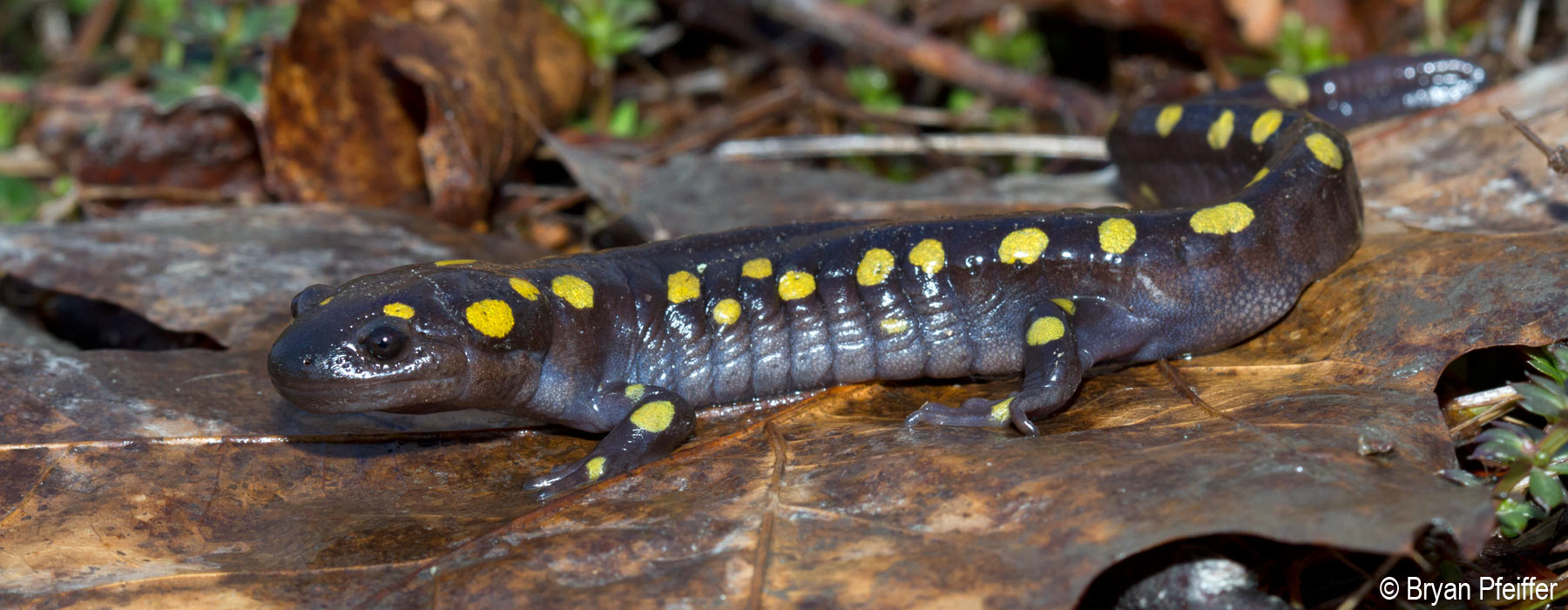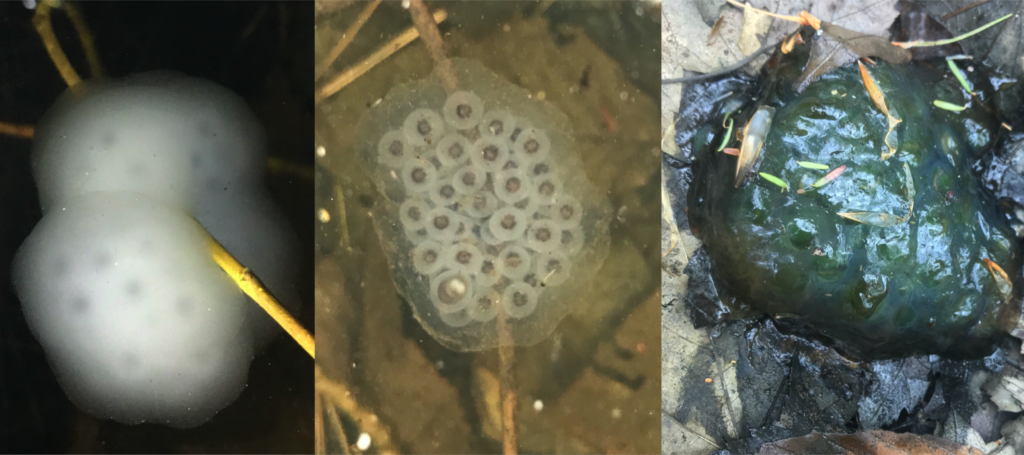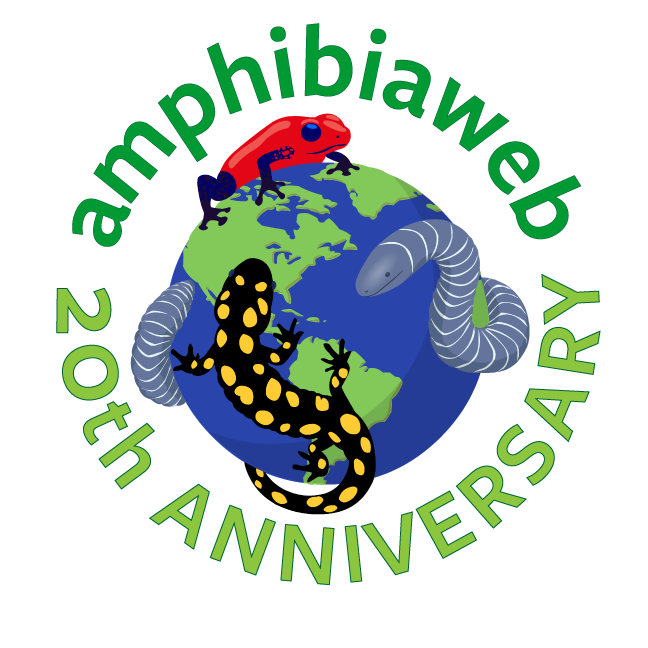Spotted Salamanders are the quiet celebrities of vernal pools. Loudly marked, and fixed with what seems to be a perpetual smile, the Spotted Salamander has slimy starpower; the vernal pool's equivalent of a Giant Panda.
Spotted Salamanders also have fascinating life histories – essentially spending the year underground and emerging during spring rains for a once-a-year breeding session. Beyond that, Spotted Salamanders are among our best indicators of healthy vernal pool/woodland ecosystems.
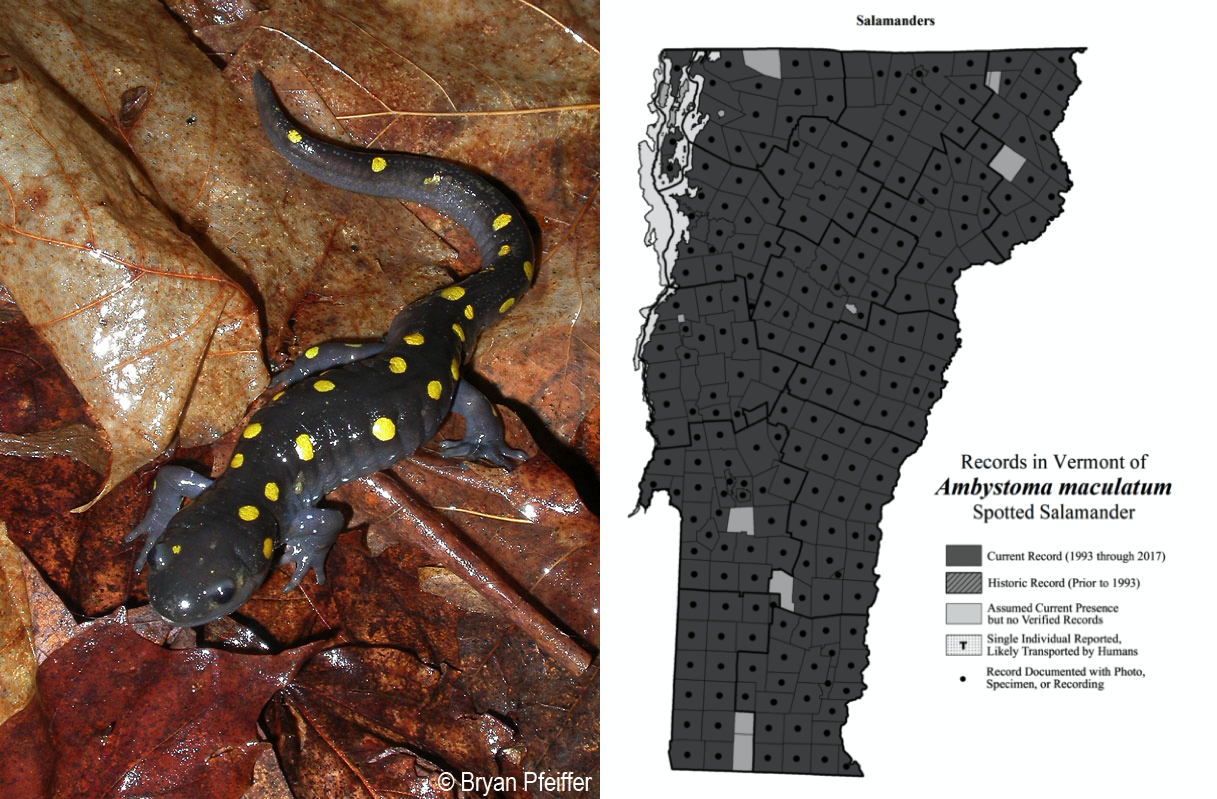
(Left) Spotted Salamander © Bryan Pfeiffer. (Right) Spotted Salamander distribution in Vermont © Vermont Herp Atlas
Egg Mass Identification
What: Egg masses are oval, elongate, or kidney-shaped. Unlike other egg masses, the outer jelly matrix is very firm, like set gelatin, and is either clear, opaque white, or may become green from a symbiotic algae. Embryos are 2.5-3 mm in diameter, and the vitelline membrane (the cloudy halo around each embryo) is the width of the embryo. Egg masses may contain from 30 to 250 individual embryos, and range from 2 inches in diameter up to softball-size.
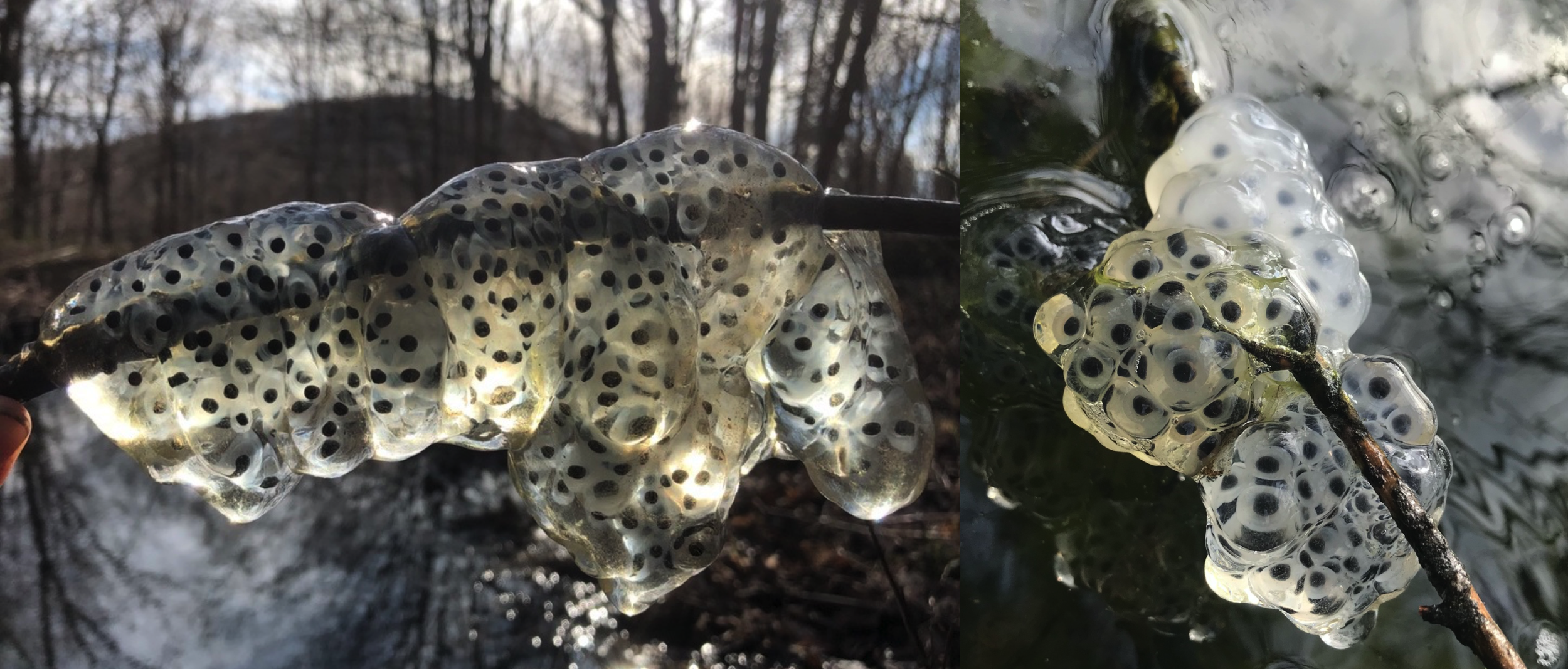
(Left) Spotted Salamander egg masses © Tim Duclos. (Right) Spotted Salamander egg masses © Kevin Tolan
Unlike the egg masses of Jefferson and Blue-spotted Salamanders, which tend to be very viscous and drippy, Spotted Salamander egg masses hold their shape well when out of water.
Where: Egg masses are usually attached to sticks, weeds, grasses, or reeds within 8-10 inches of the surface, occasionally much deeper, and hatch in 4-8 weeks depending on water temperature.
Larvae: The 1⁄2” long larvae have feathery, external gills, and take 5-10 weeks before leaving the pool as a 1-2” salamander.
Vermont Observations
Photo Gallery
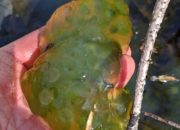
Spotted Salamander Egg Mass
© Jim Corven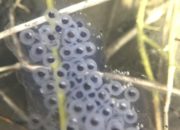
Spotted Salamander Egg Mass
© Kevin Tolan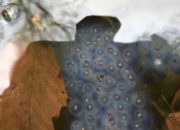
Spotted Salamander Egg Mass
© Laura Copeland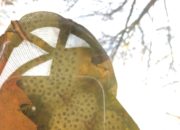
Spotted Salamander Egg Masses
© Alex Wells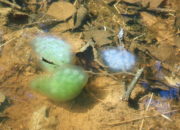
Spotted Salamander Egg Masses
© Lynn Harper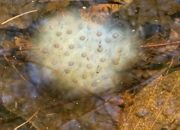
Spotted Salamander Egg Mass
© monahankann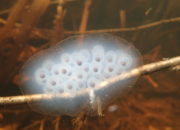
Spotted Salamander Egg Mass
© Laura Costello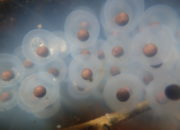
Spotted Salamander Embryos
© Laura Costella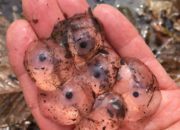
Spotted Salamander Egg Mass
© Cindy Sprague
